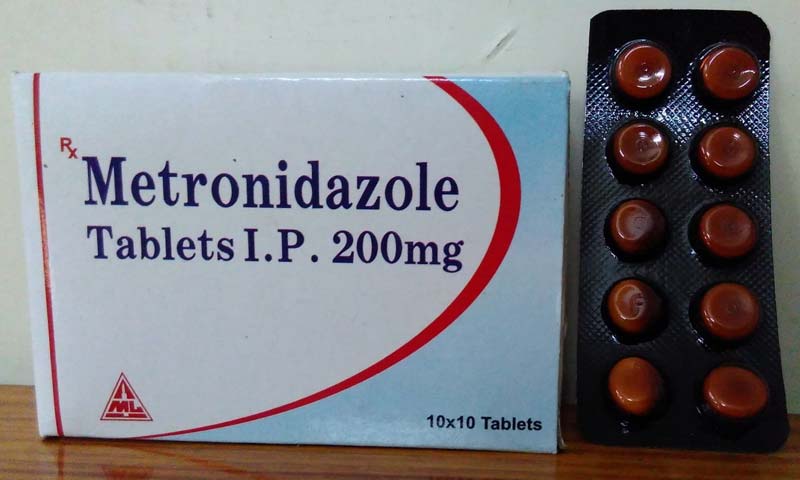Metronidazole Tablet: Uses, Mechanism, and Clinical Importance
Introduction
Metronidazole is a commonly used antibiotic and antiprotozoal medication available in several forms, including tablets, creams, gels, and intravenous preparations. The oral tablet form of metronidazole is especially important in the treatment of various bacterial and protozoal infections. It is a prescription-only medication with a wide range of applications in both outpatient and inpatient settings.

What Is Metronidazole?
Metronidazole is a synthetic nitroimidazole derivative that exhibits antimicrobial activity against anaerobic bacteria and certain protozoa. It was first introduced in the 1960s and has since become a mainstay in the treatment of infections where anaerobes are suspected or confirmed.https://todayliv.com/when-is-the-best-time-to-take-pregabalin-and-methylcobalamin-capsules/
Its chemical name is 2-(2-methyl-5-nitro-1H-imidazol-1-yl)ethanol, and it is typically available in tablet strengths of 250 mg or 500 mg. Some treatment regimens may call for higher doses, especially in serious systemic infections.
Mechanism of Action
Metronidazole works through a reduction process that occurs within anaerobic cells. Once inside the microorganism, it is converted into reactive nitro radicals by redox proteins found in anaerobic organisms. These radicals interact with microbial DNA, causing strand breaks and loss of helical structure, ultimately leading to inhibition of nucleic acid synthesis and cell death.https://todayliv.com/when-is-the-best-time-to-take-pregabalin-and-methylcobalamin-capsules/
This mechanism makes metronidazole selectively toxic to anaerobes and some protozoa, while having minimal effect on human cells.
Primary Uses of Metronidazole Tablets
Metronidazole tablets are used for a wide range of clinical conditions, particularly those involving anaerobic bacteria or protozoa. Key indications include:
- Bacterial Vaginosis (BV)
Metronidazole is a first-line treatment for BV, a common vaginal infection caused by an imbalance in the normal vaginal flora, typically involving anaerobic bacteria like Gardnerella vaginalis. The standard dose is 500 mg orally twice daily for 7 days, although a single-dose regimen (2 grams once) is sometimes used.
- Trichomoniasis
Caused by the protozoan Trichomonas vaginalis, trichomoniasis is a sexually transmitted infection (STI) effectively treated with metronidazole. Both partners are usually treated to prevent reinfection. A single 2-gram oral dose or 500 mg twice daily for 7 days is commonly prescribed.
- Amebiasis
Metronidazole is used to treat intestinal and hepatic amebiasis caused by Entamoeba histolytica. In liver abscess cases, it is usually given in combination with a luminal agent such as paromomycin to eradicate cysts from the intestine.https://todayliv.com/when-is-the-best-time-to-take-pregabalin-and-methylcobalamin-capsules/
- Giardiasis
This intestinal infection, caused by Giardia lamblia, is common in developing regions and among travelers. Metronidazole effectively eradicates the organism, usually given as 250 mg three times daily for 5 to 7 days in adults.
- Clostridioides difficile (C. difficile) Infections
While oral vancomycin and fidaxomicin are now preferred for initial treatment of C. difficile-associated diarrhea, metronidazole was historically a first-line agent and is still used in mild to moderate cases or in combination therapies.https://todayliv.com/when-is-the-best-time-to-take-pregabalin-and-methylcobalamin-capsules/
- Pelvic Inflammatory Disease (PID)
Metronidazole is often included in combination regimens to cover anaerobic organisms in polymicrobial PID, which involves the upper female reproductive tract. It helps treat infections caused by anaerobes like Bacteroides species.
- Intra-abdominal Infections
In infections such as peritonitis, diverticulitis, or intra-abdominal abscesses, metronidazole is frequently used in combination with other antibiotics (like cephalosporins or fluoroquinolones) to ensure anaerobic coverage.
- Dental and Periodontal Infections
Metronidazole is commonly prescribed for dental abscesses, gingivitis, and other oral infections involving anaerobic bacteria. It can be used alone or with amoxicillin.
- Helicobacter pylori Eradication
Metronidazole is part of some triple or quadruple therapy regimens for H. pylori, the bacteria linked to peptic ulcer disease and gastric cancer. It is often combined with a proton pump inhibitor and other antibiotics like clarithromycin or tetracycline.
- Surgical Prophylaxis
In surgeries with a high risk of anaerobic contamination—such as colorectal or gynecological surgeries—metronidazole may be given as part of a prophylactic regimen to prevent postoperative infections.
Dosage and Administration
Metronidazole tablets are generally taken orally, with or without food. However, taking it with food may help reduce gastrointestinal side effects like nausea. Alcohol must be avoided during treatment and for at least 48 hours after the last dose due to the risk of a disulfiram-like reaction (severe nausea, vomiting, flushing, tachycardia).
Side Effects
While generally well tolerated, metronidazole has several potential side effects:
Common Side Effects:
Nausea
Headache
Metallic taste
Loss of appetite
Abdominal cramps
Serious Side Effects:
Peripheral neuropathy (with prolonged use)
Seizures (rare)
Encephalopathy
Allergic reactions (rash, itching, swelling)
Black Box Warning: Long-term use has been associated with carcinogenicity in animal studies, so its use should be limited to approved indications and durations.
Drug Interactions
Metronidazole interacts with several medications, including:
Warfarin – Enhances the anticoagulant effect, increasing bleeding risk.
Alcohol – Risk of disulfiram-like reaction.
Lithium – May increase lithium levels and toxicity.
Phenytoin and Phenobarbital – May reduce the efficacy of metronidazole.
Special Considerations
Pregnancy: Metronidazole is generally considered safe in the second and third trimesters, but caution is advised in the first trimester unless benefits outweigh risks.
Breastfeeding: It is excreted in breast milk; short-term use is often considered acceptable, though some guidelines recommend temporary discontinuation.
Liver Disease: Dose adjustment may be necessary due to hepatic metabolism.
Resistance Concerns
Although resistance to metronidazole among anaerobic bacteria is relatively low, it has been increasing in some protozoal pathogens and H. pylori. Therefore, susceptibility testing and resistance surveillance are becoming more important.
Conclusion
Metronidazole tablets are a versatile and essential antibiotic in the treatment of various anaerobic and protozoal infections. Its broad spectrum, affordability, and oral availability make it especially valuable in both resource-limited and advanced healthcare settings. However, judicious use is necessary to avoid side effects, interactions, and resistance development.